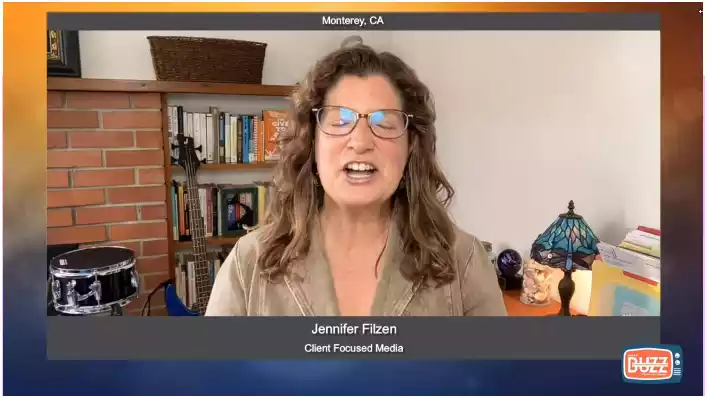Strategies for Addressing Prior Authorization Challenges
Unlock the key to smoother healthcare operations! Explore proven strategies for addressing prior authorization challenges, ensuring faster approvals, and enhancing patient care. Read more to transform your practice today!

If you’re wondering how to get prior authorization for medication, start by contacting your healthcare provider to ensure all necessary medical documentation is complete. Your provider will then submit a prior authorization request to your insurance company, detailing the medical necessity of the medication. Utilizing electronic prior authorization (ePA) systems can streamline this process. Be proactive by following up with both your provider and the insurance company to check on the status and provide any additional information needed to expedite approval.
Let’s dive in!
Table of Contents
Strategies for Addressing Prior Authorization Challenges

Approaches for Healthcare Professionals
Enhancing Documentation Efficiency
Maintaining organized and readily accessible records is essential for a seamless prior authorization process. Introducing a record keeping system can significantly enhance the efficiency of accessing and sharing information. These systems not facilitate retrieval of patient histories and treatment plans but also lower the chances of errors that may arise from manual document handling. Healthcare professionals should consistently update these records to ensure that any request for authorization is backed by the most up, to date and comprehensive patient information.
Moreover arranging records based on the urgency of treatments or specific insurance needs can speed up the approval process leading to patient treatment. Utilizing Technology The implementation of authorization (ePA) tools is a game changer, for healthcare providers looking to simplify the prior authorization procedure. These tools automate the submission and monitoring of authorization requests resulting in responses from insurance companies and less manual paperwork. This technology enables integration with health record (EHR) systems ensuring that patient information is securely transmitted to insurers without redundant data entry.
By utilizing ePA solutions healthcare providers can significantly reduce time spent on tasks enhance submission accuracy and expedite the approval process for patient access to necessary treatments or medications. Staff Training and Development To effectively manage authorization procedures investing in training and development for administrative staff is crucial. Providing education on healthcare policies, insurance regulations and documentation requirements equips staff with the knowledge needed to navigate the complexities of authorization efficiently. Workshops and seminars focusing on improving communication skills can also play a role, in reducing errors and enhancing the speed of request submissions.
In addition offering training, on using authorization (ePA) systems and other technological tools will help ensure that staff members are well versed in utilizing modern solutions to speed up the prior authorization process. Equipping staff with these skills not improves the efficiency of managing authorizations but also enhances overall patient care by reducing wait times for essential treatments.
Working Together and Communication
Developing and nurturing a working relationship with insurance companies can greatly streamline the authorization process. Establishing a connection involves transparent communication understanding each others needs and collaborating towards shared objectives. Healthcare providers can assign staff members as insurance liaisons who specialize in engaging with insurance companies.
These individuals can serve as the point of contact ensuring effective resolution of any queries or issues. Additionally holding meetings with insurance company representatives allows for discussions on recurring issues, negotiating processing times and staying informed about policy changes or requirements. By fostering a partnership with insurance companies healthcare providers can simplify the authorization process ultimately benefiting patients with faster access to necessary care.
I'm very thankful for Portiva who I know is looking after my practice while I'm gone the virtual assistants can manage prescription refills, documents they can triage patients and just kind of answer administrative questions and they can handle a lot on their own. But also, they're very good about contacting me if there's any emergency or anything I need to attend to. So I'm very thankful for Portiva they can help almost any provider almost anywhere and it really allows for some good work-life balance as I'm getting to experience right now at my family farm so I'm very thankful for Portiva and I'm very happy to use their services"

Board Certified Family Medicine Physician

Portiva's Virtual Medical Assistant - I have all the support I need. There's somebody checking my email, any patient messages. Patients are still able to schedule and handle any scheduling issues and any kind of billing that needs to still go through. Portiva hands handles it all for me. I have support i have somebody that I can access 24/7 pretty much. It's all very seamless. If somebody has an emergency or needs a medication called in. I know that the va's at portiva will handle that for me.

Board Certified Family Medicine Physician

Approaches for Patients

Educating patients about the significance and procedures involved in authorization is a step in enhancing their comprehension and involvement, in managing their own healthcare. Educating patients, about the reasons behind needing approval before certain treatments, procedures or medications can manage their expectations about when they can start their treatment. Healthcare providers should simplify how they explain the approval process making it clear how it impact access to healthcare services and why it might cause delays. Equipping patients with information on how they can get involved in and speed up the process like keeping their insurance details updated empowers them to work together in overcoming healthcare challenges. This education not demystifies the procedure. Also aligns patient expectations reducing frustration and improving patient satisfaction.
Patient Empowerment
Encouraging patients to take a role in managing their healthcare is crucial for navigating through the complexities of obtaining approval smoothly. Active patients play a part in understanding their health conditions, treatment plans and whats needed for insurance approvals for recommended procedures or medications. This involvement includes asking questions to healthcare providers doing research and closely monitoring their cases with both healthcare providers and insurers. Patients who stand up for themselves can help detect delays or misunderstandings, in the approval process leading to resolutions.
Moreover patients can strengthen their case by providing health records and documentation when requested. This active participation not speeds up the authorization process but also empowers patients, with greater knowledge and confidence in making healthcare decisions. Understanding the ins and outs of insurance requirements is crucial for patients to effectively manage their healthcare needs and expenses. A practical suggestion is for patients to carefully go through their insurance benefits handbook, which details covered services, co payment amounts and the procedures for submitting claims and resolving disputes. It’s advantageous to arrange a discussion with an insurance representative who can address any uncertainties and offer personalized advice on navigating the policy concerning prior authorization prerequisites for treatments or medications.
Additionally it’s important for patients to stay updated on any modifications in insurance policies often occurring annually to ensure they are well informed about their coverage particulars. Accessing online patient portals provided by insurance companies can also provide access to policy details claims status updates and communication avenues. By grasping their insurance policies patients can prevent medical expenses and foster smoother interactions with healthcare providers.
In conclusion
Efficiently navigating the landscape of authorizations demands efforts, from both healthcare providers and patients. Effectively managing this procedure not reduces the workload, for healthcare staff. Also improves patient care by cutting down on wait times for treatments. By establishing training initiatives fostering partnerships with insurance providers and empowering patients through education and self advocacy healthcare providers can streamline the authorization process. Moreover being knowledgeable about and actively adhering to insurance guidelines can prevent delays ensuring that patients promptly access the care. The ultimate objective is to create a healthcare setting where administrative tasks, like authorization support than impede the delivery of patient care. By implementing these approaches healthcare professionals and patients can collaborate to address the obstacles posed by authorization transforming challenges into opportunities to enhance the healthcare journey.
To learn more about prescription drugs that can enhance your medical practice. Discover more about Portiva and unlock a world of possibilities by visiting our homepage today!
- Securing the future with prior authorization services
- Exploring the role of technology in prior authorization
- Use of prior authorization technology
- Outsourcing the preauthorization process
- Streamlining preauthorization processes
- Advancing with preauthorization services
- Reducing precertification costs
- Improving efficiency in prior authorization
- Increasing patient satisfaction with preauthorization services
- Maximizing the advantages of prior authorization
- Advanced preauthorization technology
- Addressing security concerns in prior authorization processes
- Providing quality patient care with preauthorization
- Preapproval technology advantages
- Rising to the prior authorization challenge
- Utilizing precertification technology
- Tips on implementing precertification services
- Reviewing outsourced services for prior authorization
- Handling circumstances with preapproval services


